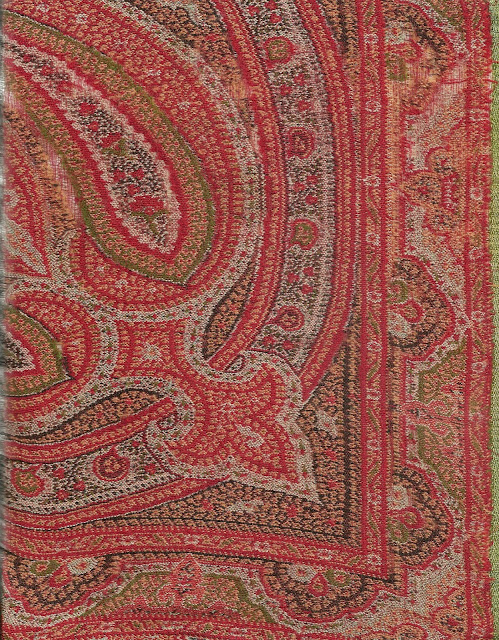Raised Embroidery
Often I am asked if I have a favorite textile. This is like asking a mom which is her
favorite child. Each is unique, each
has positive (and negative attributes), each brings a different
aesthetic. Asked if I have a favorite
textile technique, the answer is immediate.
I have always favored embroidery.
I admit to having tried (with varying degrees of success) sewing clothes
and home goods, rug braiding and hooking, quilting, crochet and knitting. I have even dabbled in paper-making and
basket weaving, which I consider to be cousins of textiles on the textile
family tree. But after many, many years
of working with all forms of textiles and their production I am still drawn to
the art of embroidery.
It is not that I am particularly adept at embroidery
techniques. I love the portability,
being able to take with me small pieces of work when I travel. But I especially love the richness
of the finished product, the variety of the stitches, the assortment of
fibers, and the ability of the textile artists to create their own unique works
of art.
My textile library is filled with editions of embroidery
history, technique, ethnic and
contemporary. Also, of course, are the
many volumes of examples and instructions waiting for me to stitch.
The Embroiderer's Flowers,
Thomasina Beck, David and Charles, 1992
The Embroiderer's Garden,
Thomasina Beck, David and Charles
Like all trends and pastimes, embroidery has seen a roller
coaster history. While never being
completely absent, there are periods in which embroidery was considered an
important textile art form, only to give way to other techniques. One case in point is the needlework commonly
called “Stump Work”. I consider this to
be a rather unfortunate title.
Originally, this type of embroidery was called “Raised Work” or
“Embosted Work” It was in Victorian
times that the term stumpwork was used. Perhaps it pertained to the use of
wooden stumps or moulds which, when padded offered an element in relief, or it
could have come from the printed designs, stamped on the ground fabric. The French word “estompe” means embossed,
and is a likely contender.
When speaking of the history of raised work, it is a short
one. It reached the height of its
popularity between 1640 through 1680.
There are earlier samples worked by professional embroiderers (Brioders)
with three dimensional design elements.
The themes for these
works were often stories from the Old Testament or depictions of court
life. The main pattern was often the
work of a professional designer. There
were even kits available. One of the
most delightful features of these embroideries was the inclusion of various
forms of flora and fauna, realistic, as well as fanciful. These lesser elements were usually not to
scale. Therefore a pea pod might be as
large as a rabbit. Patterns were
available in collections printed for embroiderers. Relief elements, in addition to the wooden forms for bodies and
facial features, were made from wrapped wire, beads and other embellishments.
Some motifs were directed embroidered onto the ground fabric in a variety of
stitches while other were created separately as “slips” and later added to the
scene.
A Book of Flowers, Fruits, Beasts, Birds and Flies -
Seventeenth-Century Patterns for Embroiderers, Curious Works Press, 1995
The Complete Book of Stumpwork Embroidery, Jane Nicholas,
Sally Milner Pub.,
Boward NSW, Australia, 2005
Raised Embroidery- a Practical Guide of Decorative Stumpwork,
Barbara and Roy Hirst, Merchurst LTD, 1993
Hand Embroidered Country Scenes, Sue Newhouse,
Search Press, 1997
My next project might well be a small stumpwork, perhaps the
view of my patio and the grape vines growing across the portal.
Maybe not.

















